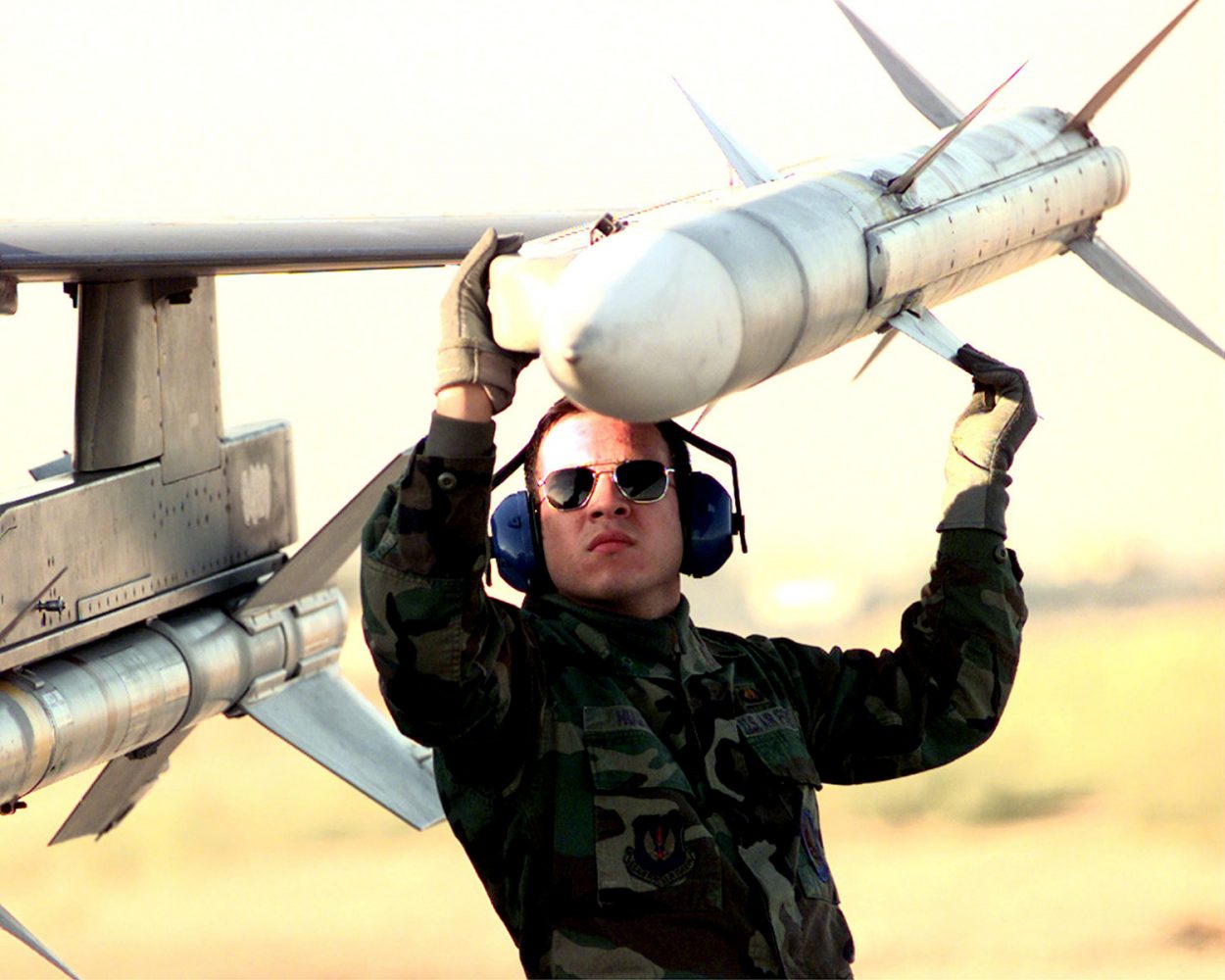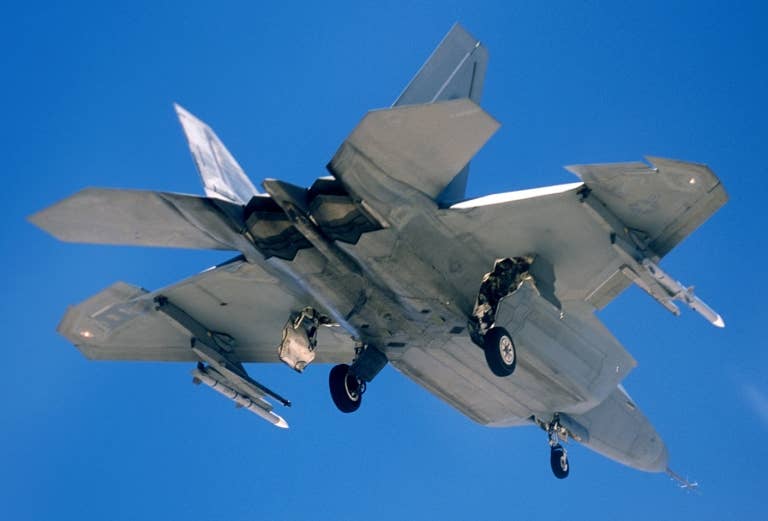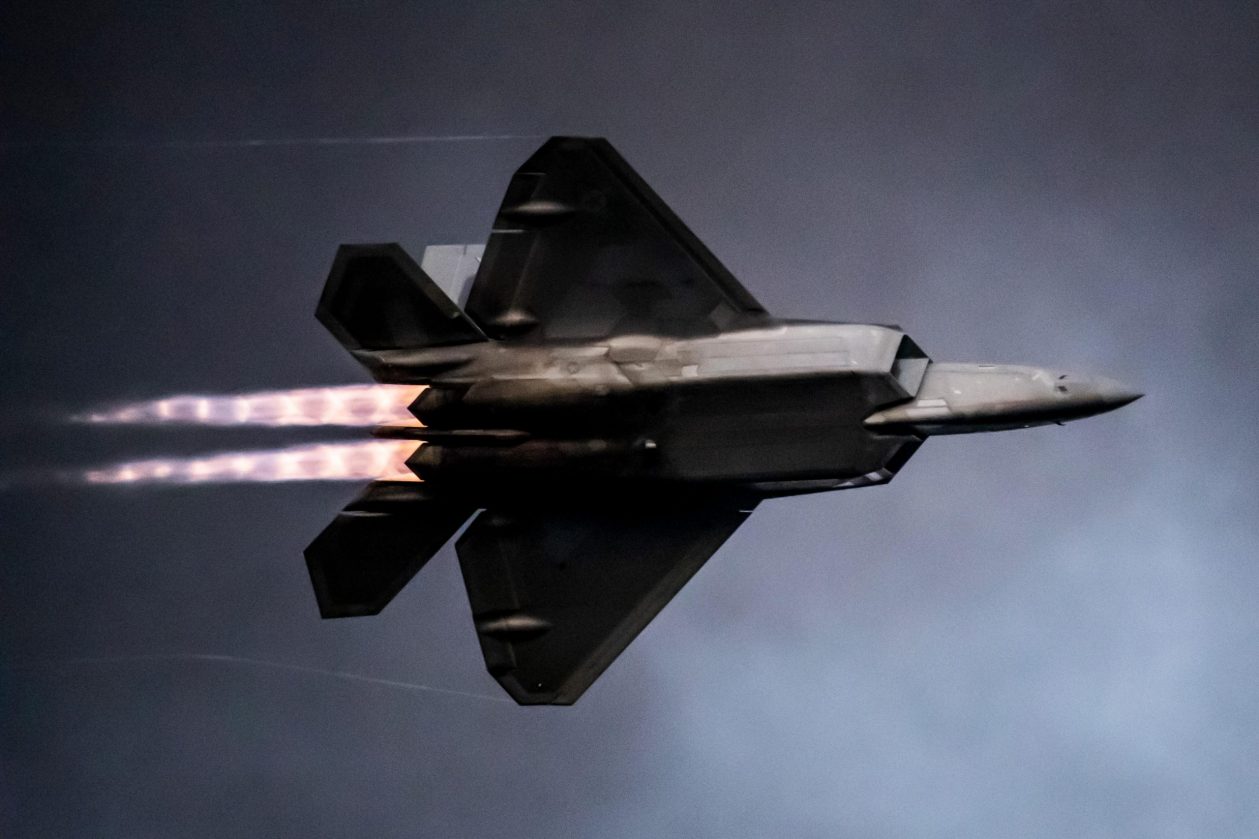Gen. Mark Kelly, the head of the United States Air Force’s Air Combat Command, has recently shared an artist’s concept of the Lockheed Martin F-22. The image depicts three F-22s with distinctive fuel tanks and faceted pods under their wings.
However, one thing that drew a lot of interest was an unknown missile fired by one of the F-22s. This unidentified missile is most likely the highly classified AIM-260 Joint Advanced Tactical Missile, according to military observers.
The existence of the AIM-260 JATM was initially confirmed in 2019 during an Air Force Life Cycle Management Center industry conference. The missile is being developed by Lockheed Martin and is expected to replace the AIM-120 AMRAAM in the near future.
The Service wants to use this missile to replace the AIM-120 Advanced Medium-Range Air-to-Air Missile (AMRAAM) with a new, longer-range weapon. The JATM has a significantly increased range over the AMRAAM, matching or exceeding the capacity of newer versions of China’s PL-15, according to USAF officials.

The highly classified JATM is thought to combine a multi-mode seeker with a long-burn rocket system that can fit inside the F-22’s weapons compartment. The Navy’s F/A-18E/F and, eventually, the F-35 will be equipped with it.
The image also shows a modular, “stacked” propulsion system, implying that the missile may be customized for longer or shorter missions. Although the Air Combat Command (ACC) artwork does not depict an air intake or unusual propulsive apertures, as seen on Lockheed’s “Cuda” advanced missile, analysts believe the missile will have a revolutionary propulsion technology. The service also wishes to retain this missile in a highly secure location.
In order to justify a military construction project at Hill Air Force Installation in Utah in 2019, the Air Force stated that the base required a specific storage location for the JATM.
According to the service, the reason is that the missile is “extremely sensitive,” necessitating the establishment of a “Special Access Program Facility” at the base with strict security.
USAF said the JATM “is the number-one air-delivered weapon priority for both the Air Force and the Navy, and out-prioritizes other weapon system improvements and modernization efforts on any fielded aircraft.”

Extended-Range Fuel Tanks & Faceted Pods
Since the F-22’s production halted in 2010, the Air Force has apparently spent more than $12 billion to continuously update the fighter. Revelations like Kelly’s image generally occur before new systems go live in places where they can be seen by the public.
The tanks appear to be the same as those indicated in current Air Force budget documents, while the pods are most probably an infrared search and track system and/or an electronic warfare system.
In recent weeks, photos of an F-22 with the new outer-wing pods have emerged on the internet, captured near Lockheed’s Palmdale, Calif., plant, which houses its Skunk Works advanced development department.
Although their exact function is unknown, analysts believe they are a long-awaited infrared search and track device and potentially an electronic warfare pod.
The Air Force has previously refused to speculate on what they could be. When questioned about the pods and other photographs showing F-22s, F-35s, and F-117s flying with highly luminous silvery appliques, Chief of Staff Gen. Charles Q. Brown Jr. simply replied, “They’re for a test.”

Then there are the fuel tanks, which have a distinct appearance. According to the recently issued budget line-item books, the F-22 will receive new fuel tanks and pylons that will be more economical and stealthy than their 600-gallon predecessors.
For many years, the F-22 has been equipped with 600-gallon tanks. The main issue is that the jet is not stealthy when carrying them, and the attachment surface is not smooth when released for dogfighting, causing the F-22’s radar cross-section to suffer.
The additional fuel tanks are referred to as the Low Drag Tank and Pylon system (LDTP) in the Air Force’s arguments for the fiscal 2023 budget request, which the USAF describes as a “critical capability” for retaining air dominance. The additional tanks and pylons increase the range of the F-22 while maintaining its “lethality and survivability.”
They will let F-22s fly supersonically while remaining stealthy, but they can also be discarded using “smart rack pneumatic technology,” resulting in a stealthy-smooth surface.
Testbed For Future Generation Aircraft
The F-22 will utilize technology developed for the Next Generation Air Domination (NGAD) family of systems, as previously reported by the EurAsian Times.

The F-22, as the USAF’s premier stealth air dominance ship, is expected to be a testbed for some of those technologies. While the F-22 is set to retire around 2030, service officials say its capabilities will be improved to keep it competitive until the NGAD replaces it.
The Air Combat Command also intends to equip the F-22 with a helmet-mounted cueing system. However, the new F-22 artwork is inadequately detailed to determine whether the pilot depicted in the fighter is donning such a helmet.
The Air Force is asking Congress to allow it to retire 33 of its oldest F-22 fighter jets in fiscal 2023, claiming that upgrading them to the latest combat configuration would cost too much. During testimony before the Senate Armed Services Committee this week, Air Force Secretary Frank Kendall put the cost at $50 million per jet, or about $1.65 billion.
- Contact the author at ashishmichel@gmail.com
- Follow EurAsian Times on Google News




